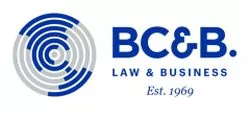Recently, the submission of third party observations has been adopted as an increasingly recurring practice during the prosecution of patent applications.
The submission of these observations provide the possibility that third parties directly point the prior art (patents, patent applications, or documents which are relevant to a pending patent application) once the patent applications are published, therefore revealing this relevant prior art to both applicant and the Patent Office – when the Patent Office's corresponding national law provides for third-party observations - as well as to applicant, International Search/Examination Authorities, and Designated Offices during the international phase prosecution in the case of PCT patent applications.
The Patent Cooperation Treaty (PCT) allows, as of July 2, 2012, the submission of third party observations, using the PATENTSCOPE search tool during the prosecution of an international patent application.
The United States Patent and Trademark Office (USPTO) also includes in its legislation, the possibility of submitting patent documents or publications that are relevant to a pending patent application once it is published and before it is granted. That is to say, if these documents are submitted within two months after its publication, or prior to sending its notice of allowance. Whichever occurs first.
Mexico also has a provision to this effect in the Industrial Property Law (IPL), which allows the submission of observations before the Mexican Institute of Industrial Property (IMPI) during the prosecution of a patent application. Article 52 bis of the IPL provides the possibility that any individual is able to submit information that is relevant to the pending patent application within six months from the date of its publication and before it is granted.
As we can see, the submission of observations for a pending patent application is becoming a recurring and accepted practice, even by the PCT.
Some questions arise from the above circumstances. What is really happening with the submission of observations by third parties? Do they truly help during the prosecution, or are they an additional burden that has delayed the work of the Patent Offices?
According to the experts, on the one hand, the submission of observations indeed increases the work of the examiners in the Patent Offices. On the other hand, however, third party observations have a strong point in favor, since they improve the quality of the granted patents.
Another drawback is that the submission might be regarded as an act carried out by an opponent against the grant of a patent, but eventually this action should be welcomed, since these observations might as well allow validating the strength of a pending patent application in advance, avoiding then unnecessary subsequent expenses.
The content of this article is intended to provide a general guide to the subject matter. Specialist advice should be sought about your specific circumstances.

